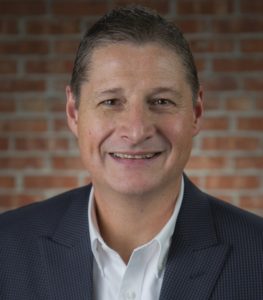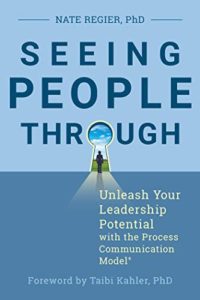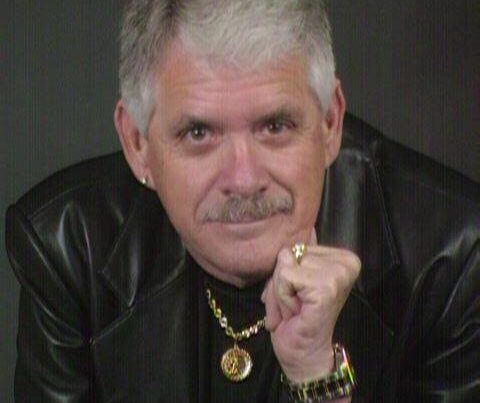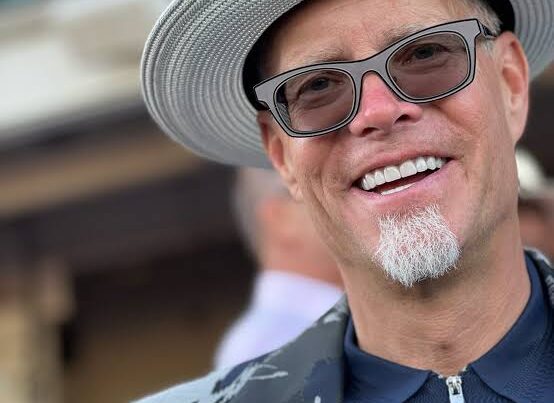Podcast: Play in new window | Download
Subscribe: RSS
How do you lead people with different personality types in a way that fosters true compassion and productivity?

Dr. Nate Regier
Nate Regier, Ph.D. is the CEO and founding owner of Next Element Consulting, a global leadership firm dedicated to bringing compassion into the workplace. Dr. Regier is a former practicing psychologist and expert in social-emotional intelligence, interpersonal communication and leadership.
Recognized as a Top 100 keynote speaker, he is a Process Communication Model® certifying master trainer. Nate is the author of three books: Beyond Drama: Transcending Energy Vampires, Conflict Without Casualties: A Field Guide for Leading with Compassionate Accountability, and his newest book, Seeing People Through: Unleash Your Leadership Potential with The Process Communication Model.
He hosts a podcast called On Compassion with Dr. Nate, writes a weekly blog, contributes to multiple industry publications and blogs, and is a regular guest on podcasts.
How different would organizational cultures look, if leaders stopped projecting their wants and needs onto their team and instead began listening to the way their employees want to be treated?
How different would communities, outside of the workplace, look if we stopped focusing inward and instead, began focusing on the needs of everyone else?
It’s time to say goodbye to the Golden Rule—treat others the way I’d like to be treated—and hello, to the Platinum Rule—treat others as they’d like to be treated.
What We Discuss with Dr. Nate Regier in this Episode
- What is personality diversity
- What is the Process Communication Model and how does it work
- How leaders can support their people as their core needs change
- How we bring more compassion into the workplace
- How we can have conflict without casualties
- Who is responsible for culture in an organization
- Diversity, inclusion and innovation
Transcript Highlights
What is Personality Diversity?
It is the idea that people differ with regard to personality, just like they do on a lot of other dimensions like gender, race and ethnicity. It is a very important driver of behavior and style. It drives a lot more than just preferences and temperaments.
What is the Process Communication Model (PCM)?
PCM was a framework for individual differences in communication. It was discovered in the 1970’s by a psychologist named Dr. Taibi Kahler. He was very interested in how individual differences manifest through communication. Individual differences don’t really matter unless 2 or more people are trying to get something done – and then it really matters in how we talk to each other.
PCM is not about what we say but how we say it; and it turns out that personality strongly influences the how or process of communication.
The first place it was put to work was at NASA to select and train astronauts for the space shuttle program. It was so incredibly predictive of behavior but also it gave behavioral interventions that the astronauts could use with each other to stay healthy and energized.
It’s a model of communication that teaches people how to talk to each other through personality differences. There are six types, but they are all within each of us. So it’s a model of types IN people, not types OF people. That is a game changer when we think about the concept of inclusion.
How Does The Process Communication Model Work?
Yes there is a personality assessment where you can get your personality structure and there are all kinds of trainings available to learn how to talk to different personality types and how to motivate people.
I can give you a quick overview on the 6 types and the most observable behaviors. I mentioned that we have all 6 types in us, but they are arranged in a preferred set order. Our Base Floor largely influences our style of communication.
The Thinker base communicates a lot through the currency of logic. Things really need to make rational, logical and orderly sense. They use a lot of language around data, timeframes, and questions around information because they are trying to synthesize and make sense of things.
The Persister Base personality type is really about value so they share a lot of opinions. They are judging and sizing up the world all the time, and trying to figure out how it fits with what is important to them and how they think things should be.
The Rebel Base personality type is much more playful and spontaneous. They engage with the world through much more humorous reactions. You’ll see them wear their heart on their sleeve. They love to have a good time, and may not have much of a filter on how they say things.
The Harmonizer Base personality type is the largest in the population with 30% of people having this as their strongest type. They are the compassionate, sensitive and warm ones that speak in the language of feelings, want to talk about relationships and want to make a personal connection with people. They want people to know they are valued.
The Promoter Base personality type is my base personality type. It is shared with 5% of the population. Their language is much more action-oriented. They want to cut to the chase, and be moving all the time. You’ll hear a lot more verbs in how they speak.
The Imaginer Base personality type is often called an introvert because they are much more reflective. They don’t speak a lot and don’t have a lot of facial expressions. They much more prefer to be alone to be energized.
These 6 types are in all of us, like energies we can channel, but one of them is definitely preferred for each person and it’s detectable through observable body language.
How We Change and Move Through the Different Floors
This is really fundamental to authenticity and transformational leadership. Even though we have all 6 types within us, one of them corresponds to our current psychological needs and motivators; which is what we need to be energized, what we value most right now and the fuel we need to show up every day.
It can be anywhere within our (6 floor) condominium. When we are born all of our motivational needs are aligned with our base floor. But for two-thirds of the population, those needs change at some point during our life. It’s an interplay between our environment, what we’re going through and perhaps what happened when we were going through our childhood. It explains why people can have the same personality but they can change. This is the only model I know of that accounts for both of those dynamics at the same time.
When we work with leaders, it’s critically important to find out what’s most important to them now, and if they’ve been through a change, how has that impacted everything from their routines, relationships and so forth.
How Do Leaders Support Their People as Their Core Needs Change?
This is really important because if we don’t get our needs met in healthy ways, we will attempt to get them met negatively, with or without awareness. For leaders, they need to understand how the current conditions impact a person’s personality – specifically their ability to leverage their strengths and get their needs met in a healthy way.
Also there are certain emotional issues that get triggered by these types of things that hit different personality types differently. If we are not aware of this, we can get triggered and find ourselves in a tailspin, with no idea why.
The leader also needs to know how they are handling all this, and taking care of themselves so they can show up. Their 6-floor building has an elevator, but if they are not taking care of themselves, that elevator is not working. If the elevator isn’t working, they can’t connect with everybody else.
How Do We Bring More Compassion into the Workplace?
A lot of people think compassion is empathy or kindness. That is barely scratching the surface of what compassion really is. If you look at the root Latin of the word COM-PASSION, it means “with suffering”. It means to suffer with somebody. Not to take away their suffering, or suffer for them; it means to suffer with them.
It interacts with inclusion in that it means: We really are in this together so we’re going to struggle alongside each other in the spirit of dignity to create something amazing. We are going to use our conflict, our suffering, this diversity and adversity as fuel to create something amazing.
So compassion is not just a feeling. It is a process for leveraging the energy of conflict to turn it into something amazing.
How Do You Have Conflict Without Casualties?
The first thing we need to do is adopt a compassion mindset, which is a specific attitude towards ourselves and other people. We talk about 3 basic switches: human value, human capability, and human responsibility. These 3 switches all have to be turned on in order to truly manifest compassion.
I have to believe and acknowledge that you and I are valuable. I have to believe that you and I are capable. And I have to believe that you and I responsible for our thoughts, feelings and behaviors; not for each other’s or anyone else’s, but for our own. When those 3 switches are on, it enables us in engaging difficult stuff in a completely different way.
I think the biggest challenge right now and that we are all vulnerable but nobody wants to admit it. Everybody wants to have it figured out. The biggest thing a leader can do is level the playing field by showing their cards, dropping their guard and letting people know how they’re really doing and struggling. Contrary to what you might believe, that actually increases your credibility, connection and influence.
That is step one in conflict without casualties. Show people that you don’t want to hurt them by getting vulnerable.
Who is Responsible for the Culture within an Organization?
I think we all are, however ultimately it is the top leader who is responsible. Being responsible doesn’t mean you’re the one who does it all. It means you are accountable for it happening.
(Examples)
If we’re not willing to be honest about our own motivations and the impact of other’s behavior on our own feelings, we are not being honest with them.
When you say, that made me feel, what you’re saying is that you don’t want to be responsible for your feelings so you are putting them on others. But you’re the one left to own up to them, and determine what you’re going to do about them. When we take 100% ownership over our feelings and our choices, we become free.
How Do You Help Leaders Avoid Being Overwhelmed with All of This?
That’s why learning about our personality diversity is so important. Once I understand somebody’s personality, including my own, it’s a very direct path to what’s most helpful.
Talk About Diversity, Inclusion and Innovation
Innovation requires all of the gifts have we have within us. Innovation magnifies when we can access these energies (from the 6 floors) from within us, but even more when we can include those energies in others. The whole culture becomes innovative.
Leadership is really an art. True artists know how to bring colors together to create something amazing. They know how to use shading, light and texture. They know how to leverage the gifts that each part of the palette brings. That’s the art. But they really need to understand the science and mechanics behind how all it works.
The greatest chefs don’t use recipes but they understand the principles, dynamics and chemical reactions – they know all of that, so they can create art.
Final Thoughts
One of the best things I’ve ever heard about models is that the purpose of a good model is to change your mind, not make it up. We’re in a climate right now where everybody has made up their mind about each other and what’s going to happen. We need frameworks, models and leaders that encourage us to change our mind and who are willing to show that they can look at things differently and try something new.
Whether it comes down to inclusion, personality or compassion it’s really about giving ourselves a chance to struggle together to create something amazing.
Episode Resources 
- Seeing People Through: Unleash Your Leadership Potential with the Process Communication Model®
- Conflict Without Casualties: A Field Guide for Leading with Compassionate Accountability
Connect with Dr. Nate Regier
Websites:
Social Media:
- LinkedIn: https://www.linkedin.com/in/nateregier
- Twitter: https://twitter.com/NextNate
- Facebook: https://www.facebook.com/NextElement
- Instagram: https://www.instagram.com/nate_regier
Did You Enjoy The Podcast?
If you enjoyed this episode please let us know! 5-star reviews for the Leaders Of Transformation podcast on Apple Podcasts, Spotify, Pandora or Stitcher are greatly appreciated. This helps us reach more purpose-driven entrepreneurs seeking to make a positive impact in the world. Thank you. Together, we make a difference!
Additional Episodes You May Like
- 362: Krister Ungerböck: 22 Talk Shifts To Transform Leadership
- 361: Alain Hunkins: Cracking The Leadership Code
- 325: Bobby Herrera: Turning Your Struggles Into Stepping Stones
- 321: Dr. Jeffrey Spahn: The Evolution of Leadership in the Midst Of Crisis
- 320: Norman Wolfe: Transforming Your Business Into A Living Organization
- 280: Darren Virassammy: How To Become A Great Place To Work










